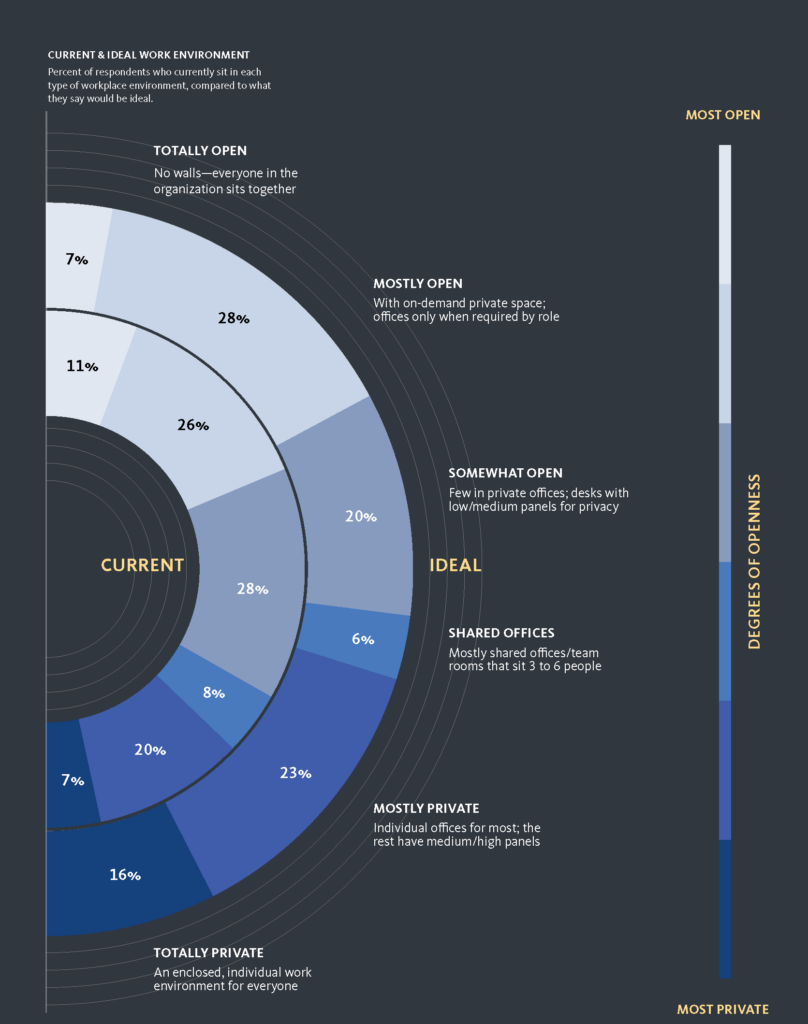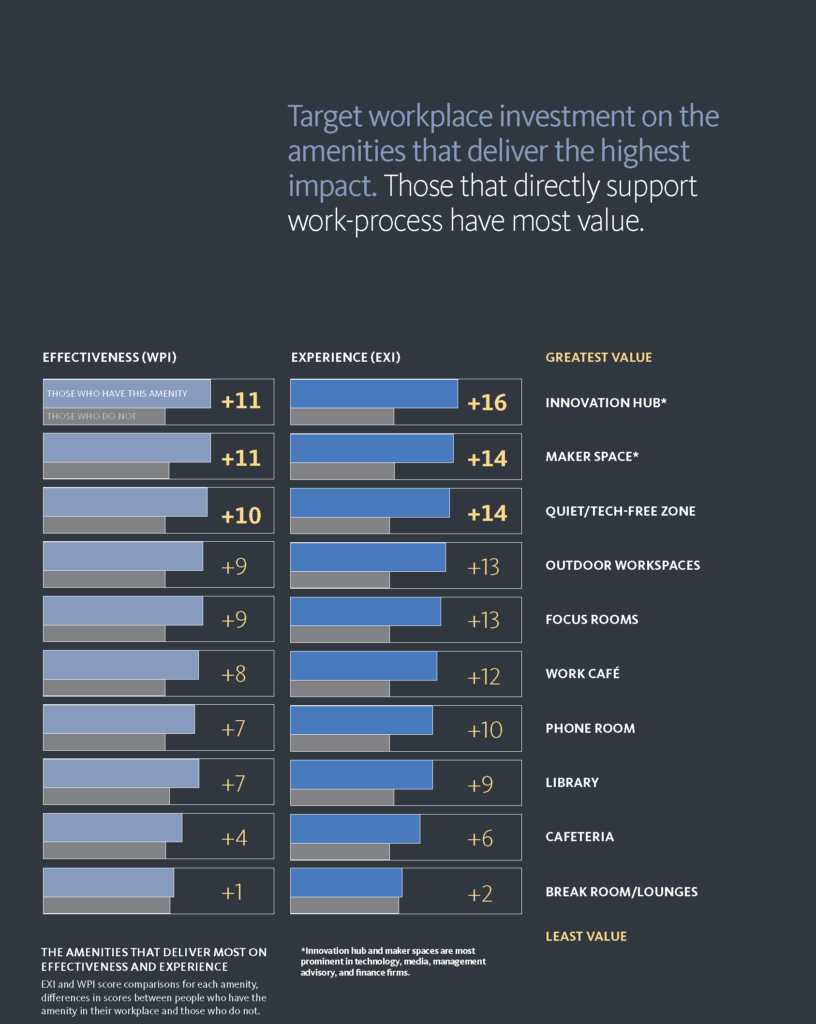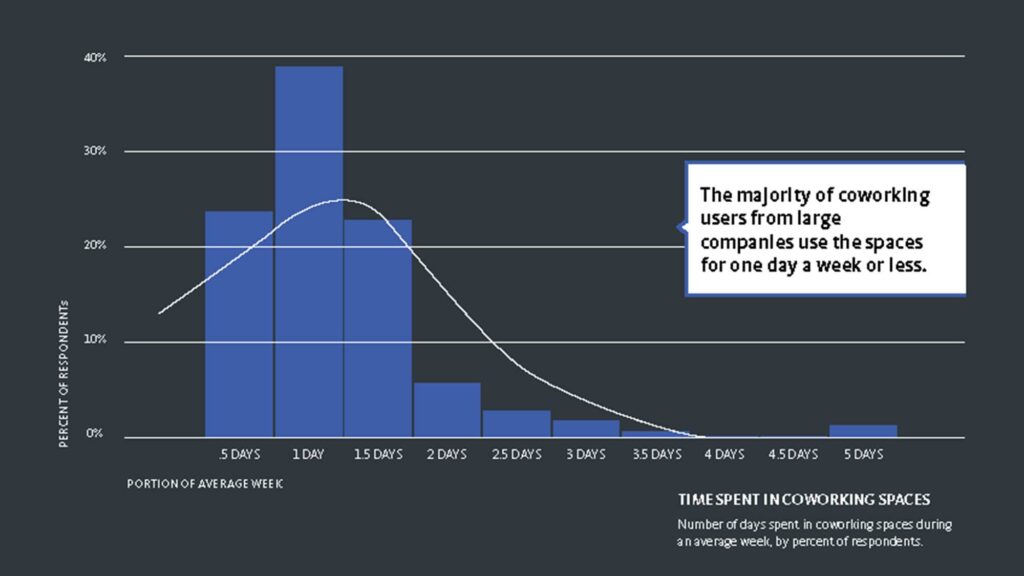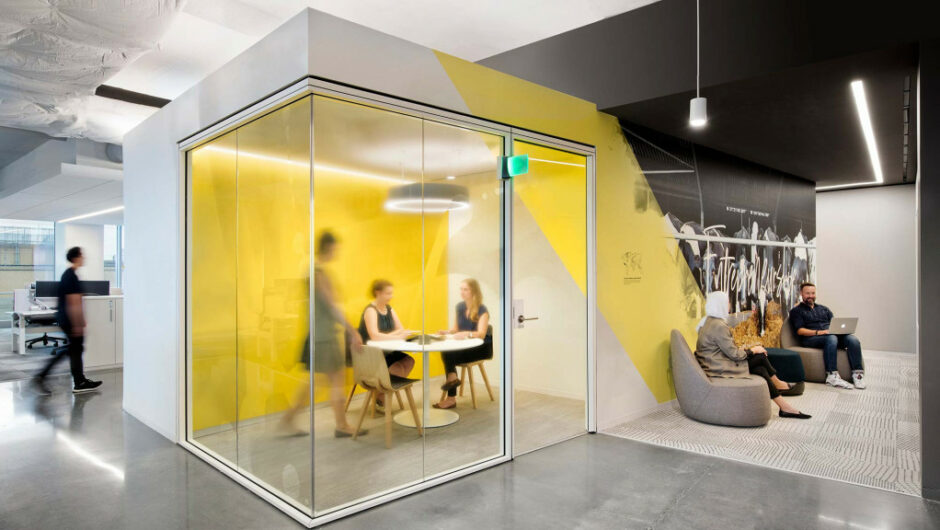It’s time to end the debate about whether offices should be an open or closed environment.
Over the years, companies’ workplaces and real estate strategies have shifted, from using enclosed offices with doors, to high-panel workstations, all the way to benching.
While all of this experimentation was done in an attempt to maximize productivity and effectiveness, what emerged was an ongoing, and mostly unsatisfying, debate on which was better — open or closed office plans.
Our 2019 U.S. Workplace Survey has given us some answers.
Gensler surveyed 6,000 offices workers for their input on these three questions: 1) exactly how open should their office be; 2) which amenities were most meaningful to them; and 3) what coworking spaces they wanted as part of their best prospective workplace.
Our data reveal what is truly going on in the current workplace, with insights on how workplace design can deliver new value to organizations.


2. Which amenities should we invest in? The new Gensler U.S. Workplace Survey finds that the amenities that directly impact a work-focused need are the most preferred. In other words, ping pong tables and unnecessary lounge areas aren’t valued by workers. The best amenity types include not only those spaces directly connected to collaboration and innovation, but also those where people can conduct individual or more focused work. The amenities with a non-work focus deliver the smallest performance gains in our sample. Lounges and break rooms, for example, had the least value.
Bottom line: It is not wise to invest in all amenities. Instead, employers should invest in work-focused amenities that directly fulfill the needs and priorities of people’s jobs. The most preferred amenities help people optimize their work performance.
3. Should coworking be considered as part of our real estate strategy?Fourteen percent of respondents in our survey of 6,000 office workers said that they used coworking space as part of their workweek. All of these respondents worked for companies of 100 people or more and most are in manager positions or higher.

There is a fast-rising body of “enterprise” employees using coworking spaces as part of their daily work options. This uptick in coworking by employees at larger companies — who already have a primary work office — is essential to understanding the changing work styles of the U.S. worker.
So why are people electing to take advantage of access to coworking space? Many times an employee’s work will call for offsite work. In these cases, coworking spaces function as a high-value amenity by providing an alternative workplace away from home. What is interesting is that the data suggest that when employees’ primary workspaces include better-designed collaborative spaces, the use of coworking spaces decreases.
The 2019 U.S. Workplace Survey clearly shows that employers should seriously consider coworking as a part of their real estate strategy. It is not an either/or issue, but a supplement like other work-focused amenities. However, the optimal benefit of coworking occurs when coworking is limited to one or two days per week. Full-time use of a coworking location actually drives down effectiveness of the individual.
It is clear that companies that provide a range of workspace options will have an advantage recruiting the best of the best in workforce talent.


